
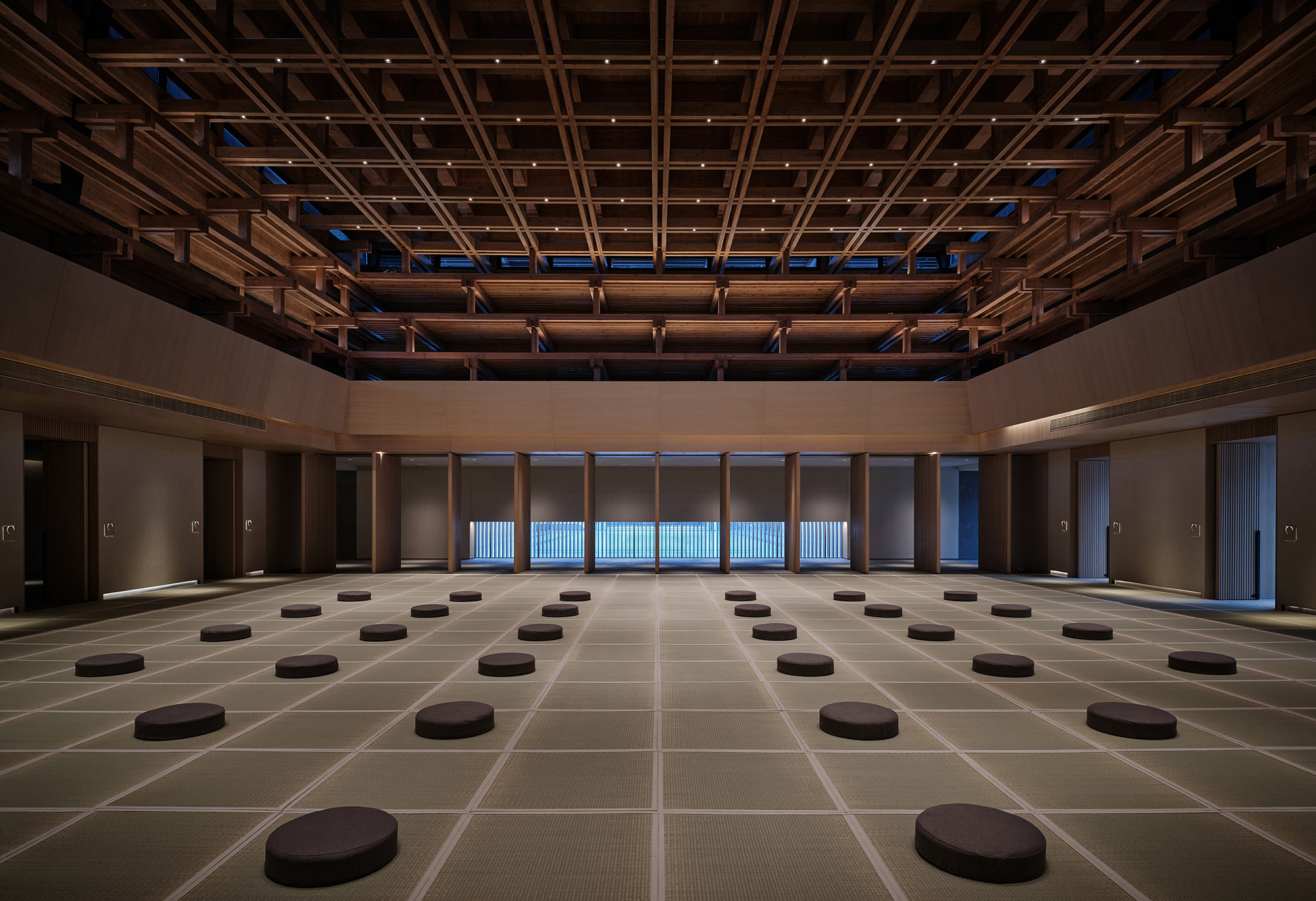
设计单位 gad杰地设计
项目地点 江苏徐州
建成时间 2022年
项目规模 6000平方米
本文文字由设计单位提供。
通常场地的特殊及复杂性也构成建筑的前置标签。此次设计对象为徐州云龙山下的禅修酒店,处于兴化寺礼佛轴线上,具备天然的安定气息和优越的景观视野,运营方希望酒店能为来往的礼佛禅修客群提供住宿和商业支撑。在此背景下,我们对此场地的介入策略,首先考虑遵循原始环境,继而融入,最终创造新的“秩序”。
Usually, the particularity and complexity of the site also constitute the front label of the building. This design object is the Yunlong Mountain Meditation Hotel, Xuzhou, which is located on the axis of worshiping Buddha in Xinghua Temple. It has a natural tranquil atmosphere and a superior landscape vision. The operator hopes that the hotel can provide accommodation and commercial support for the worshiping Buddha meditation guests. Under this background, our intervention strategy for this site is to first consider following the original environment, then integrating into it, and finally creating a new "order".

场地与场所
—
缝合古寺与城市的间隙
具体场地位于徐州泰山路北延段,云龙山脚下,周边古迹众多,景观资源丰富,西侧毗邻兴化寺,南侧古寺入口广场及下园墩博物馆,东侧和北侧与规划中的创意街区隔街相邻,地块两侧的山与城呈现混沌的分离状态。
The site is located in the north extension of Taishan Road in Xuzhou, at the foot of Yunlong Mountain. There are many historical sites and abundant landscape resources around it. The west side is adjacent to Xinghua Temple, the entrance square of ancient temple and Xiayuandun Museum on the south side, and the east and north sides are adjacent to the planned creative block across the street. The mountains and cities on both sides of the plot are in a chaotic state of separation.
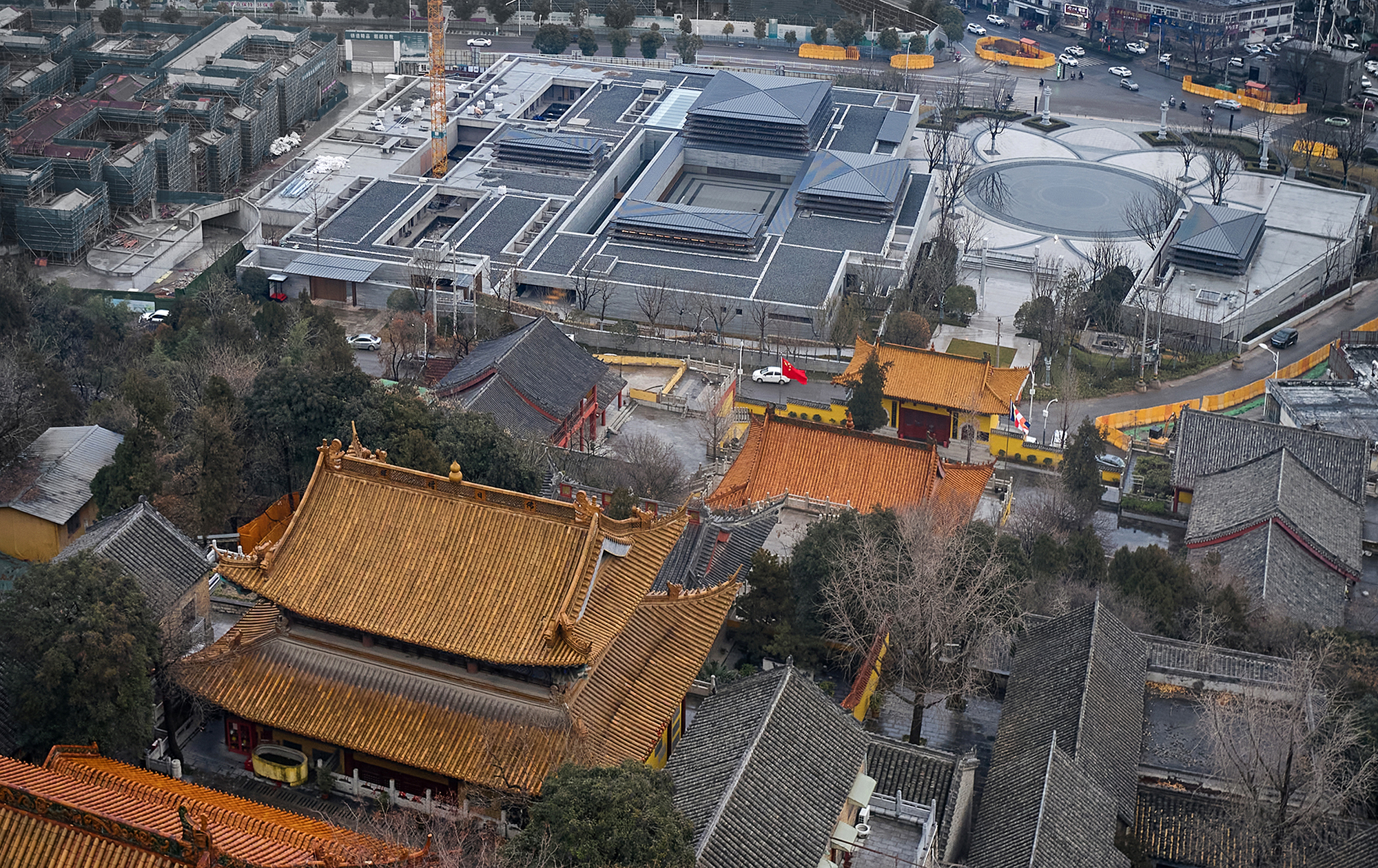
场地内珍贵古迹也是设计动作中不可回避的对象:兴化寺,初建于唐,徐州八大古寺之一,位于云龙山上,为佛教禅宗寺院。禅修酒店位置占据古寺与城市的间隙,类似承上启下的“瞭望口”,具有传统和现代的多重视角。
Precious historical sites in the site are also unavoidable objects in the design: Xinghua Temple, which was first built in Tang Dynasty and one of the eight ancient temples in Xuzhou, is located on Yunlong Mountain, and is a Zen Buddhist temple. The location of the meditation hotel occupies the gap between the ancient temple and the city, similar to the "Viewing Station" connecting the preceding and the following, and has multiple perspectives of tradition and modernity.
山脚下的佛文化广场,以佛家典型象征莲花为原型,广场竖向维度与兴化寺入口相差16米,与山顶三圣殿相差60米,利用地形聚集人气的同时起到引导与标识,作为禅修所与兴化寺的共同入口,承担佛文化节庆活动场所功能,也缓和了与城市道路的界面冲突。
The Buddha Culture Square at the foot of the mountain is based on the lotus flower, a typical symbol of Buddhism. The vertical dimension of the square is 16 meters away from the entrance of Xinghua Temple and 60 meters away from the three emperor palaces at the top of the mountain. It makes the use of the terrain to gather people's popularity, and at the same time serves as a guide and sign. As the common entrance of meditation and Xinghua Temple, it serves as a venue for Buddhist culture festivals, and also eases the interface conflict with urban roads.
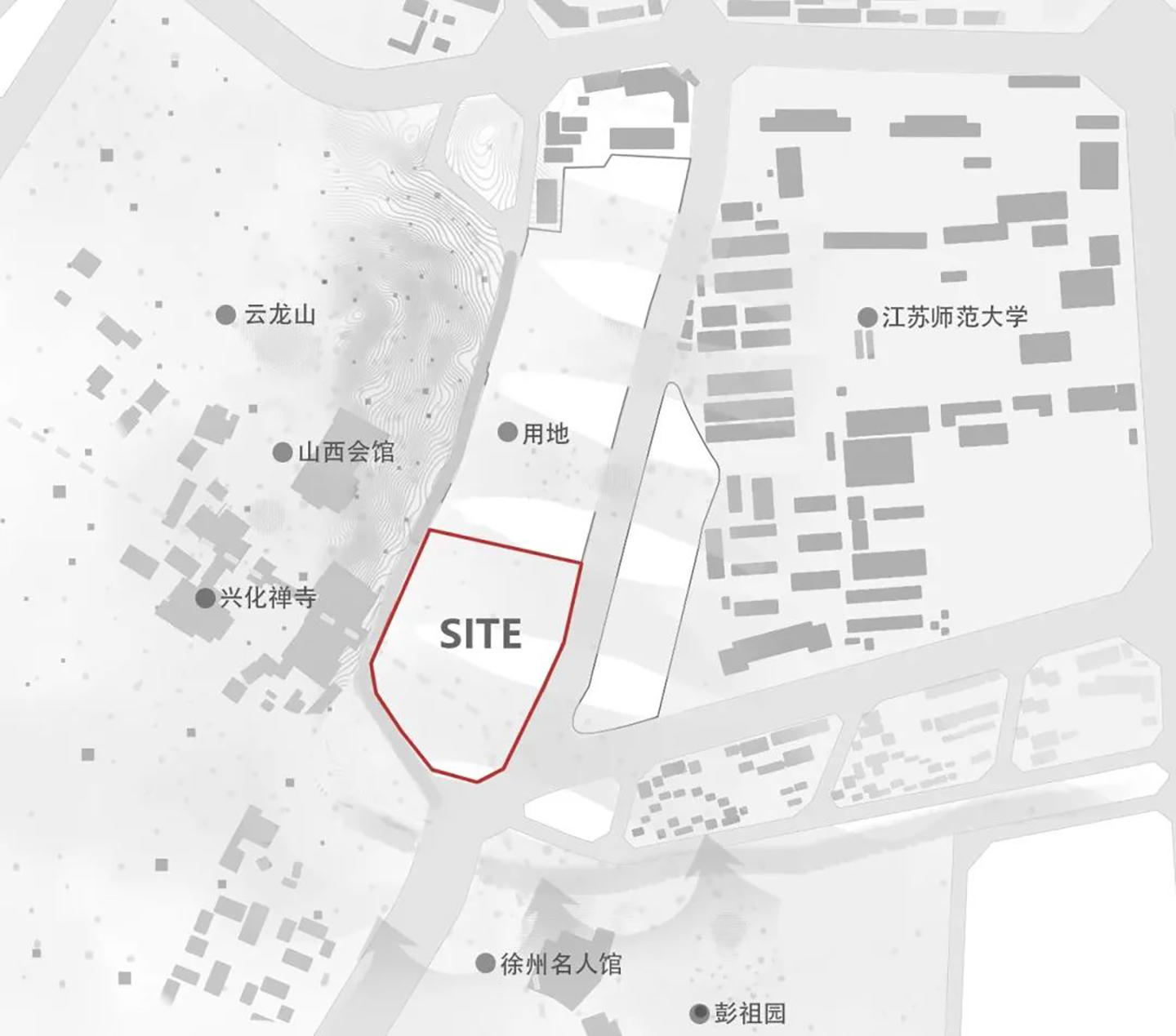

出世与入世
—
山下是俗世日常,山上是禅修场地
通过多维度对周边环境特征的分析,设计团队得出“禅”在上,“常”在下的空间规划依据——山下是俗世日常,容纳商业街区、文化展览等;山上禅寺踪迹,强调安定、放松与感悟。自下而上,环境迫使心境由动至静发生改变。酒店定位上以“禅修”为主题,非常符合场地属性。
Through multi-dimensional analysis of the characteristics of the surrounding environment, the spatial planning basis of "Zen" above and "normality" below is obtained. The foot of the mountain is earthly daily, accommodating commercial blocks, cultural exhibitions, etc., and traces of Zen temples on the mountain, emphasizing stability, relaxation and perception. From bottom to top, the environment forces the mood to change from moving to static. The positioning of the hotel with the theme of "meditation" is in line with the nature of the venue.
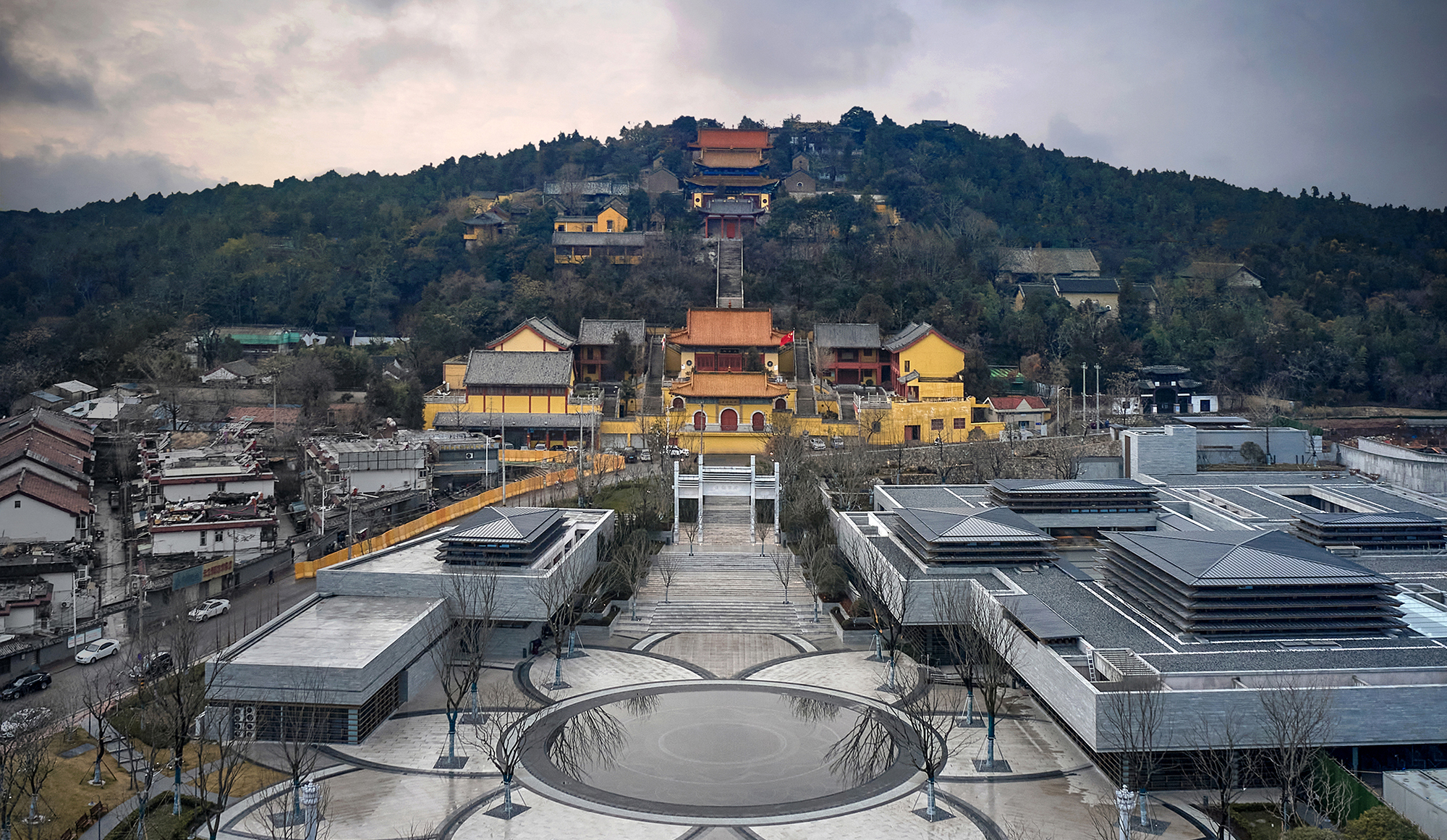

在此理念框架下,我们主动找寻和回应兴化寺千年轴线秩序,创造一条从“入世到出世”的路径。主入口设置在西侧近兴化寺位置,云东二道街上,相对静谧,入口与山西会馆隔街相对。次入口位于地块东侧云东路上,相对开放,呼应节假日的礼佛需求。进入酒店的路程中,由外至内,身心与纷扰完成一次“清洗”。
Under this conceptual framework, we actively seek and respond to the millennium axis order of Xinghua Temple, and create a path from "secular life to monastic life". The main entrance is located near Xinghua Temple on the west side, on Yundong Erdao Street, which is relatively quiet, and the entrance is opposite to Shanxi Hall across the street. The second entrance is located on Yundong Road on the east side of the plot, which is relatively open, echoing the demand of worshiping Buddha on holidays. On the way into the hotel, from the outside to the inside, complete a "cleaning" of body, mind and distractions.


新旧秩序
—
四座现代阁楼形成新的空间秩序
空间形态及功能仍依照“常在下,禅在上”,尽可能以俯仰姿态回应原始环境。四座现代阁楼形成新的空间“秩序”,原型来源于传统阁楼、佛塔和宫殿,与山上的兴化寺呼应,内部是核心功能空间,分别为大禅堂、斋堂、知客堂和寮房门厅,其他作为酒店寮房、附属商业等功能使用。
The form and function of the space are still in accordance with the principle of "Routine under, Zen on", and respond to the original environment as much as possible with a pitching attitude. Four modern attics form a new spatial "order". The prototype comes from the traditional attics, pagodas and palaces, echoing Xinghua Temple on the mountain. The interior is the core functional space, namely the Great Zen Hall, the Vegetarian Canteen, the Zhike Hall and the Squatter's Foyer. Others are used as hotel squatter rooms, ancillary businesses and other functions.


符号性的密檐源于对“阁”的现代转译,形式方正规则,逐级微收退叠。“阁”内是禅修核心空间,檐口可根据禅修的需要,控制光线与室内的照射角度,光在空间中的流露无疑需克制,既符合功能性需求,也属于禅修空间特质的自发性表达。
The secret eaves of symbols come from the modern translation of "Ge", which is square and regular in form, gradually retracted and folded. "Ge" is the core space of meditation, and the cornice can control the angle of light and indoor illumination according to the needs of meditation. The light in the space undoubtedly needs to be restrained, which not only meets the functional requirements, but also belongs to the spontaneous expression of the spatial characteristics of meditation.
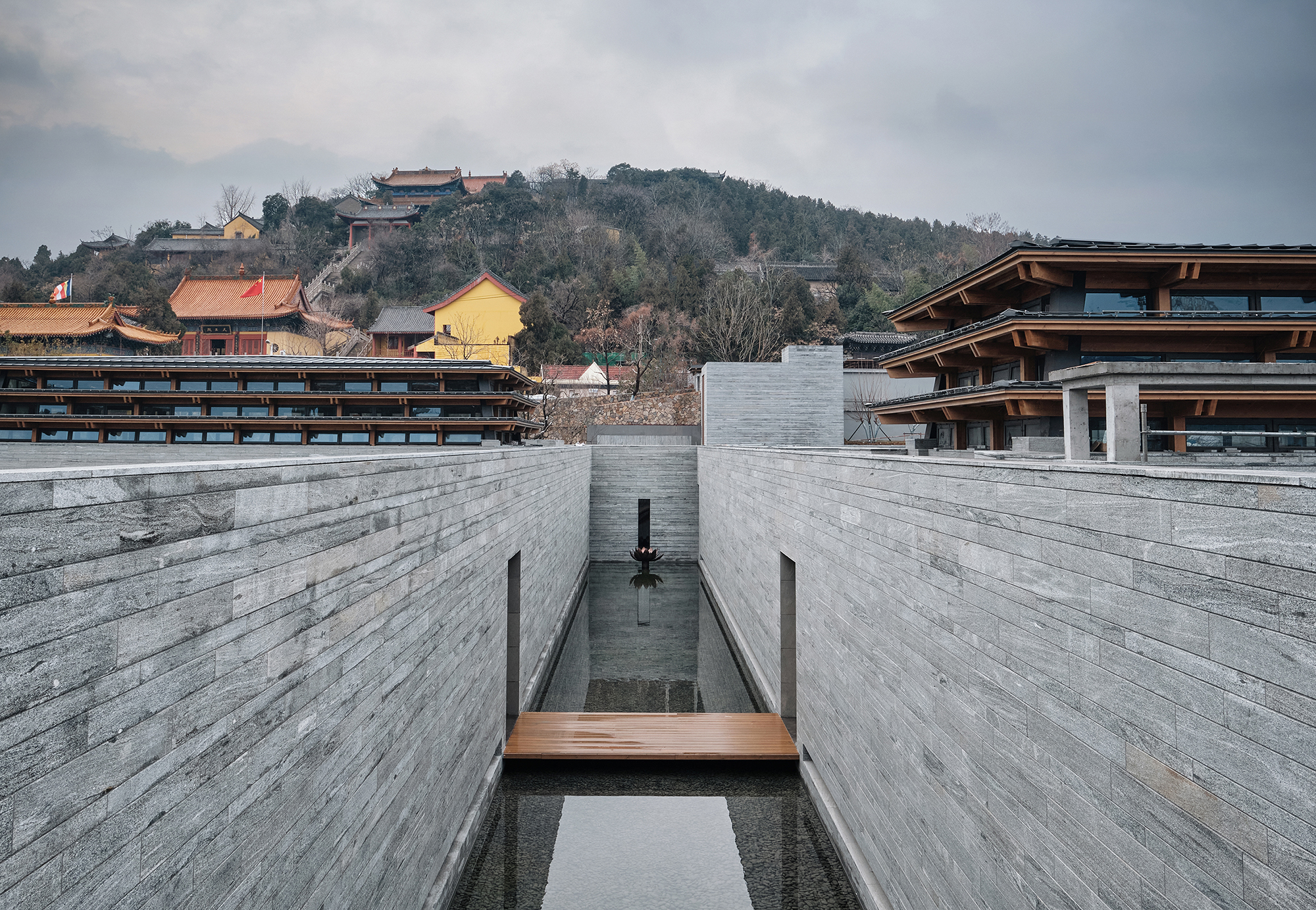
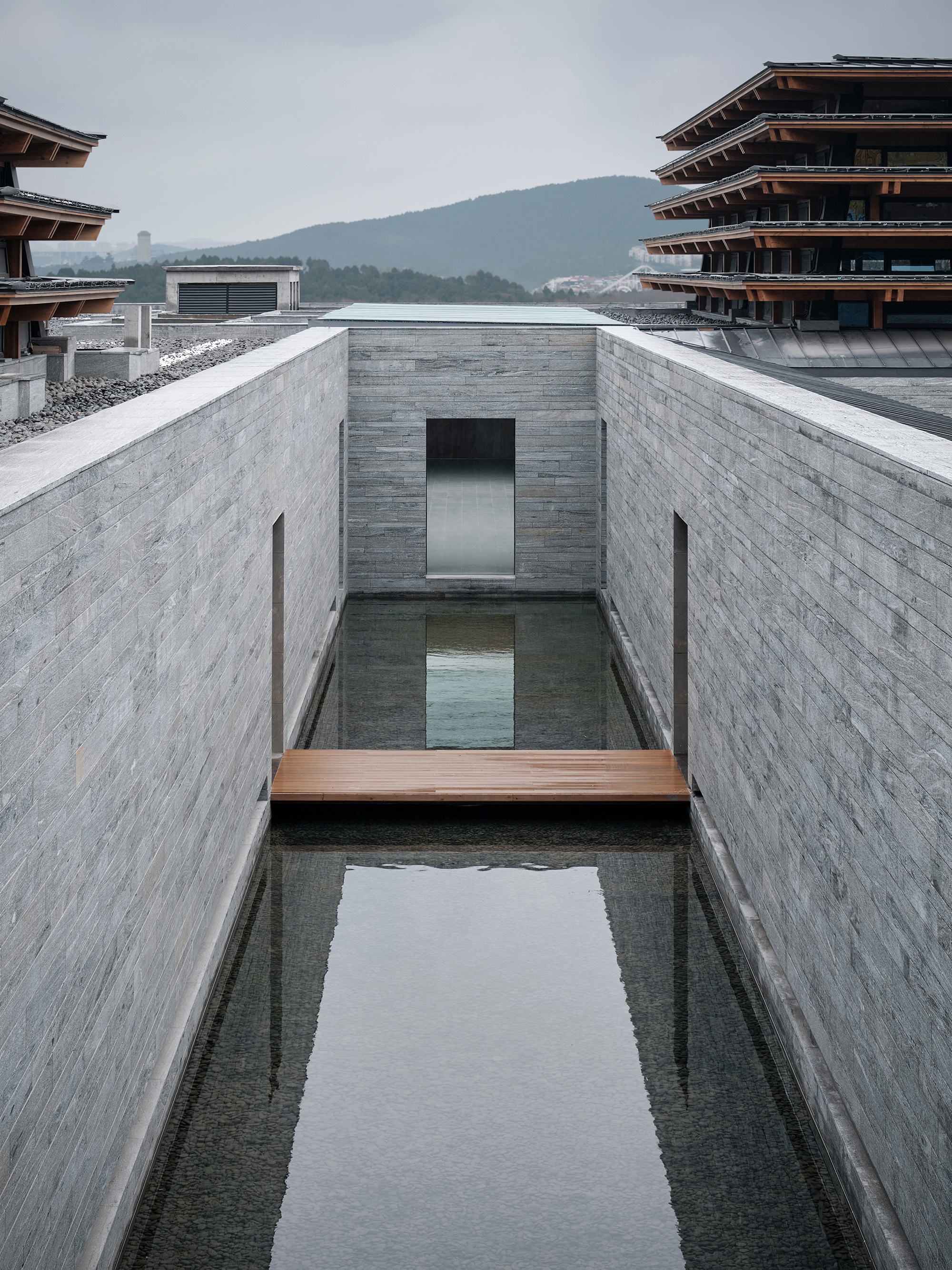
刻意压缩在较小尺度的酒店寮房,强调感官上的静谧专注,内部以六大庭院串联空间,其他大小不一的院落界定不同空间,营造层层递进的进深感。窄长形庭院的设置,隐含内向包裹与短暂停留,配置东方意象的水景、绿植、枯山水和盆景。
Deliberately compressed in a small-scale, hotel shack emphasizes the quietness and concentration of the senses, the interior is connected with six courtyards, and other courtyards of different sizes define different spaces, creating a progressive sense of depth. The setting of narrow courtyard implies inward package and short stay, and is equipped with waterscape, green plants, dry landscape and bonsai with oriental images.
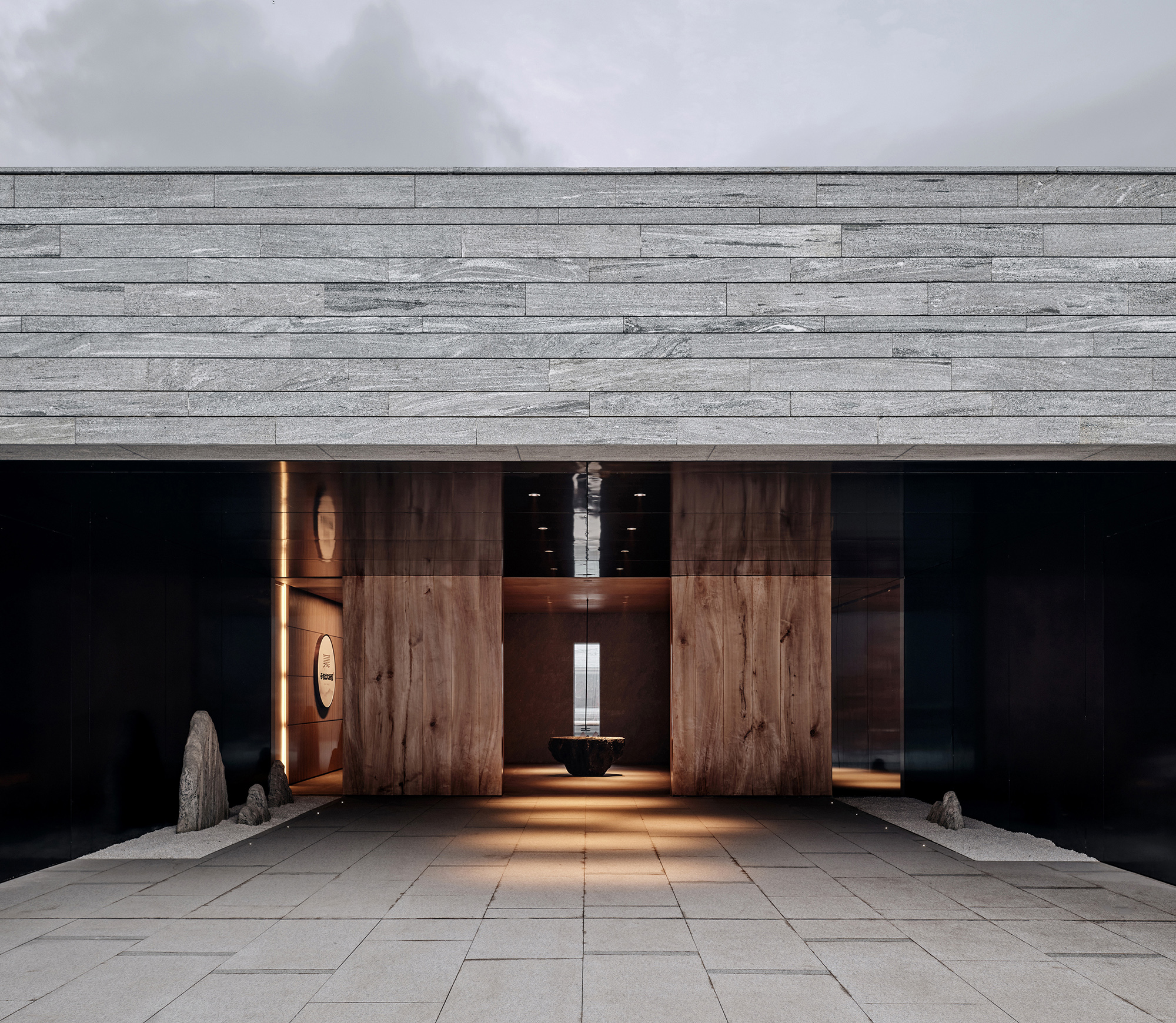
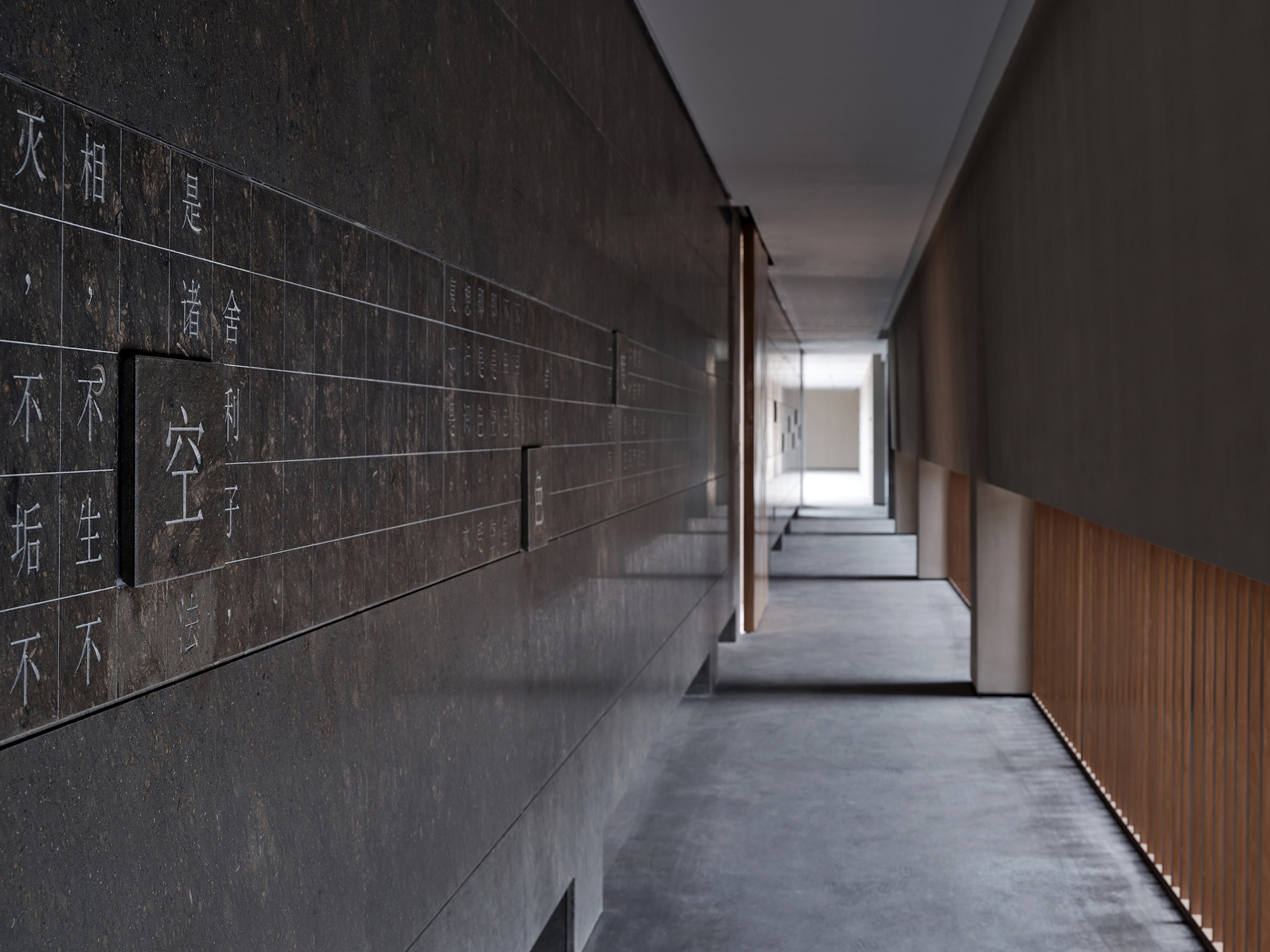


材质语言
—
材料特性与空间意象的统一
现代建筑中置入木构,能成功营造出古今时空交叠的体验,兼顾融入环境的需求。设计团队对传统阁楼“出挑深远”“飞檐翘角”意象进行抽象提炼,形成摆脱传统思路框限的新式屋檐。
Putting wooden structures in modern architecture can successfully create the experience of overlapping ancient and modern time and space, taking into account the needs of integrating into the environment, abstracting and refining the images of "far-reaching" and "cornices and corners" of traditional attics, and forming a new type of eaves that gets rid of the limitations of traditional ideas.
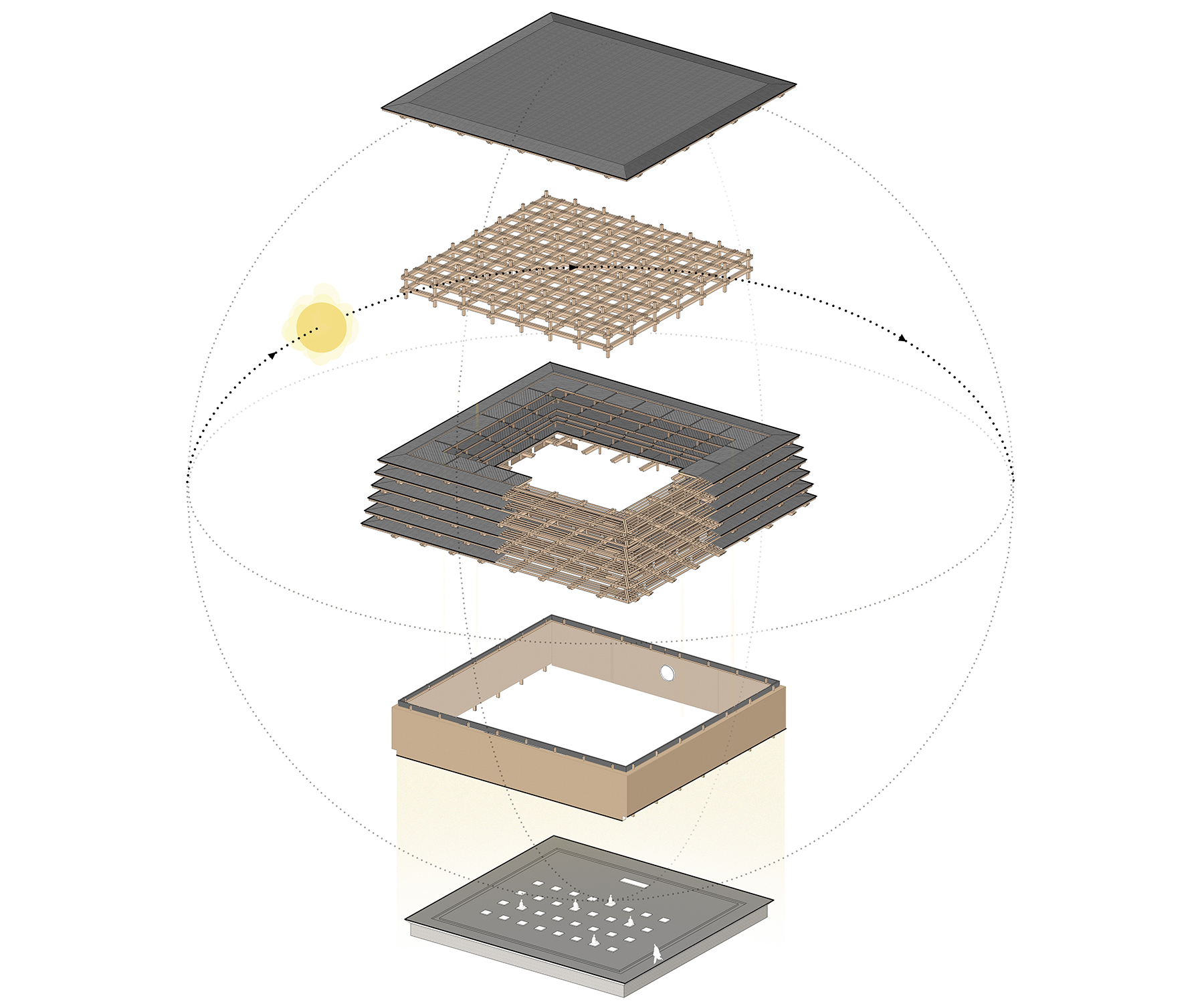



木构体系语言,还运用在禅堂、斋堂、知客堂和酒店寮房接待区等公共核心空间的屋顶及入口雨棚,既是承重构件,也是装饰构件,且令室内外视觉一体化。木构在组织方式和表达上,是讲究错落序列及朴拙质感,榫卯、搭接方式及胶合木的现代工艺,符合受力原理和朴素的视觉感官,保持了材料特性与空间意象的统一。外立面及部分墙面则采用砂岩和黄岗岩材料,塑造典型的现代禅意空间。
The wooden structure language is also used in the roofs and entrance canopies of public core spaces such as Zen Hall, Vegetarian Canteen, Zhike Hall and the reception area of hotel squatters. It is not only a load-bearing component, but also a decorative component, and integrates indoor and outdoor vision. In terms of organization and expression, the wooden structure pays attention to strewn-at-random sequence and simple texture, mortise and tenon, lap joint and modern technology of glued wood, which conforms to the stress principle and simple visual sense, and keeps the unity of material characteristics and spatial image. The facade and part of the walls are made of sandstone and Huanggang rock, creating a typical modern Zen space.


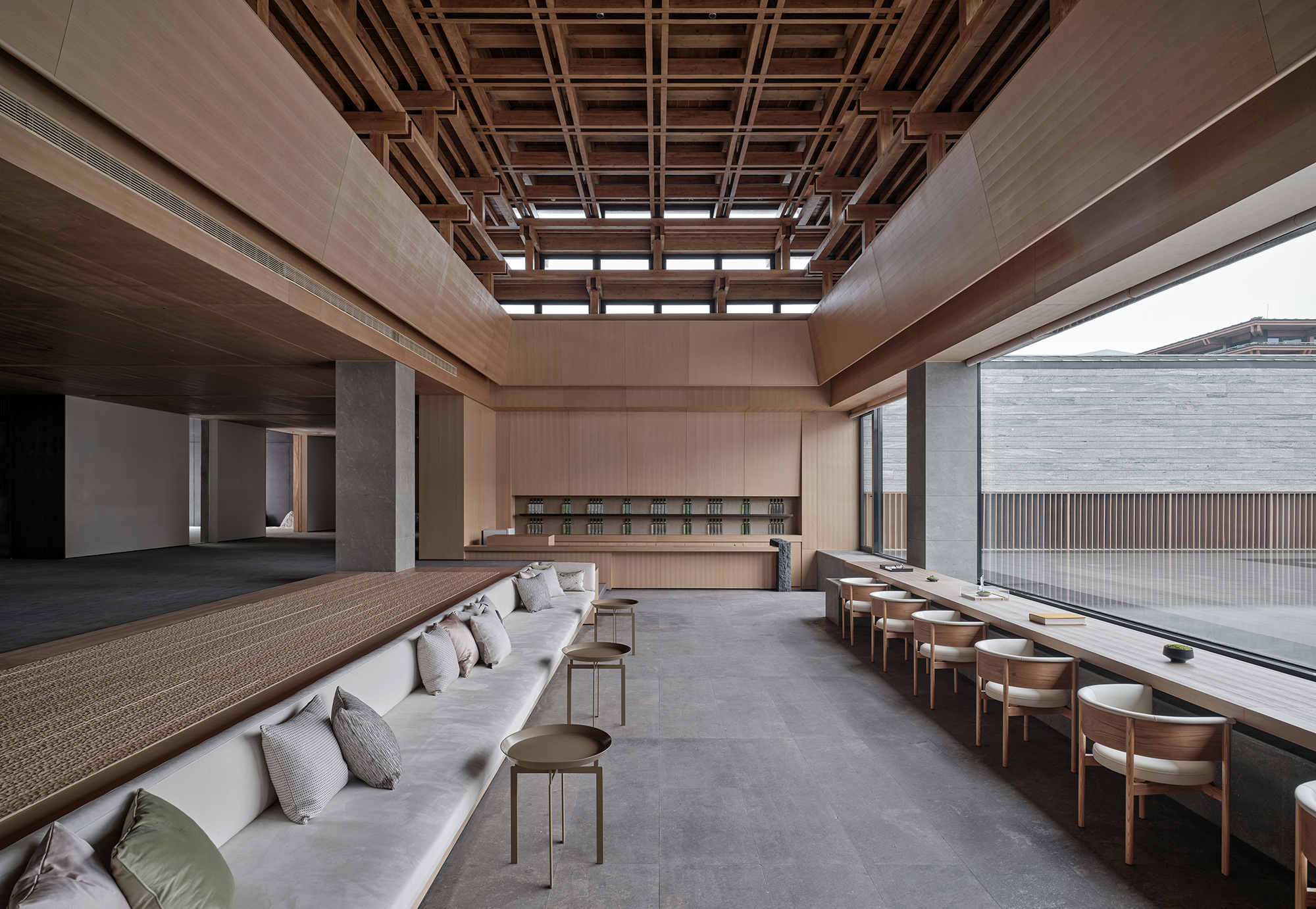
传统秩序不断被现代观念冲击,打破、重构象征着生命力,但谦逊融入,克制表达的方式,让建筑跳脱于个体意识的创作局限,充分吸纳环境特性,成就传递精神,交互对话的灵动场所。
Traditional order is constantly impacted by modern concepts, and its breaking and reconstruction symbolizes vitality. However, the humble integration and restrained expression make the architecture break away from the creative limitations of individual consciousness, fully absorb the environmental characteristics, and achieve a smart place for conveying spirit and interactive dialogue.
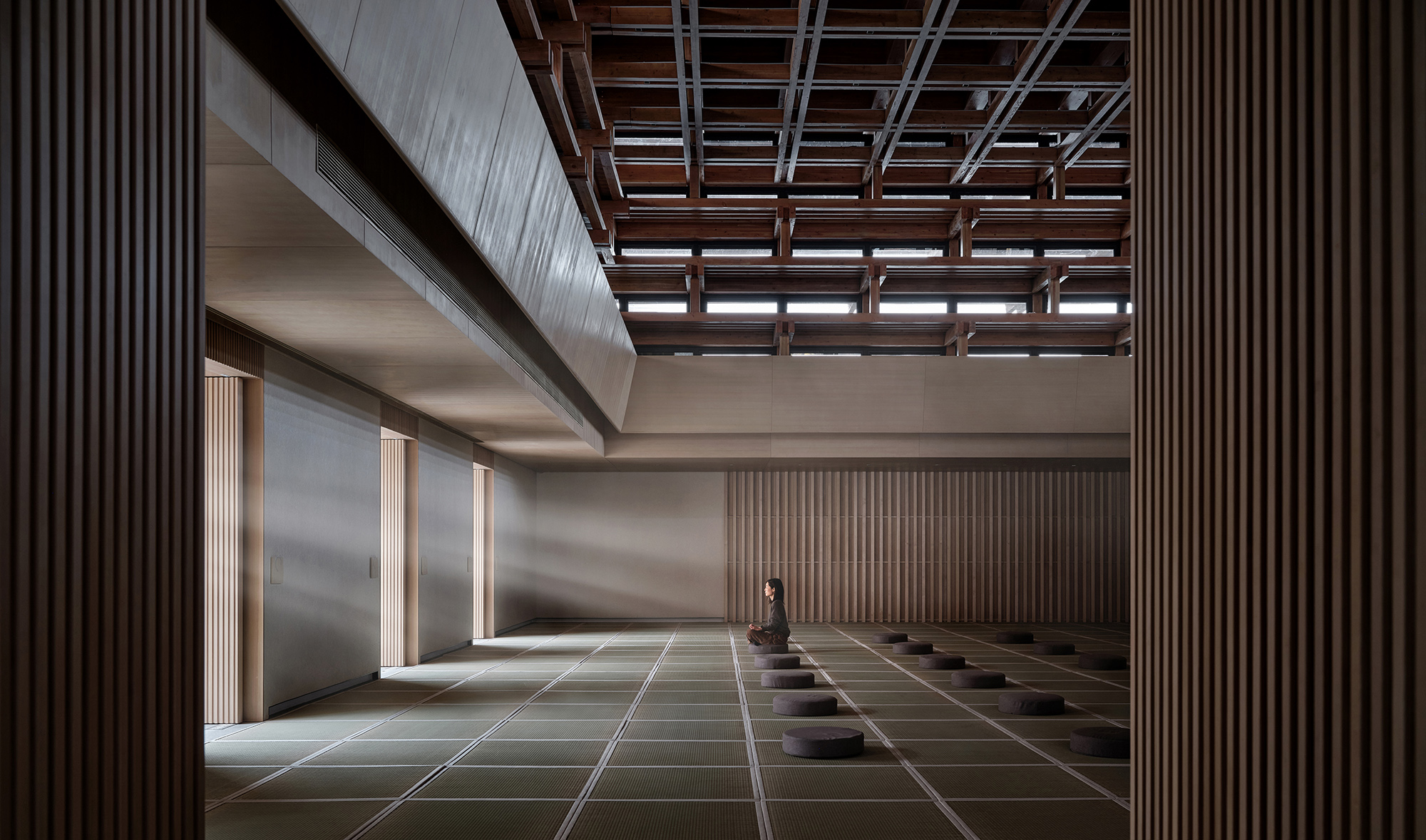
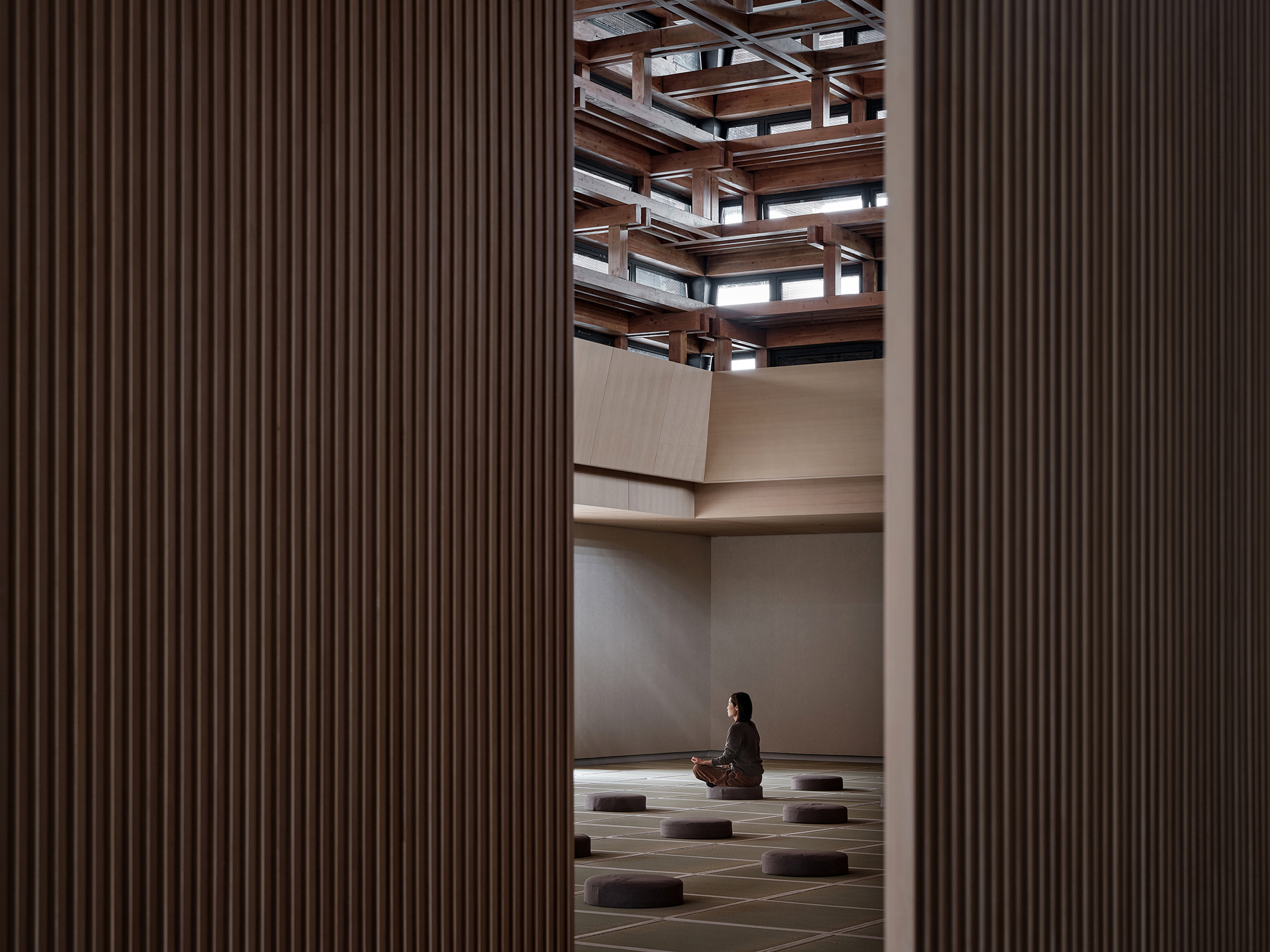
设计图纸 ▽
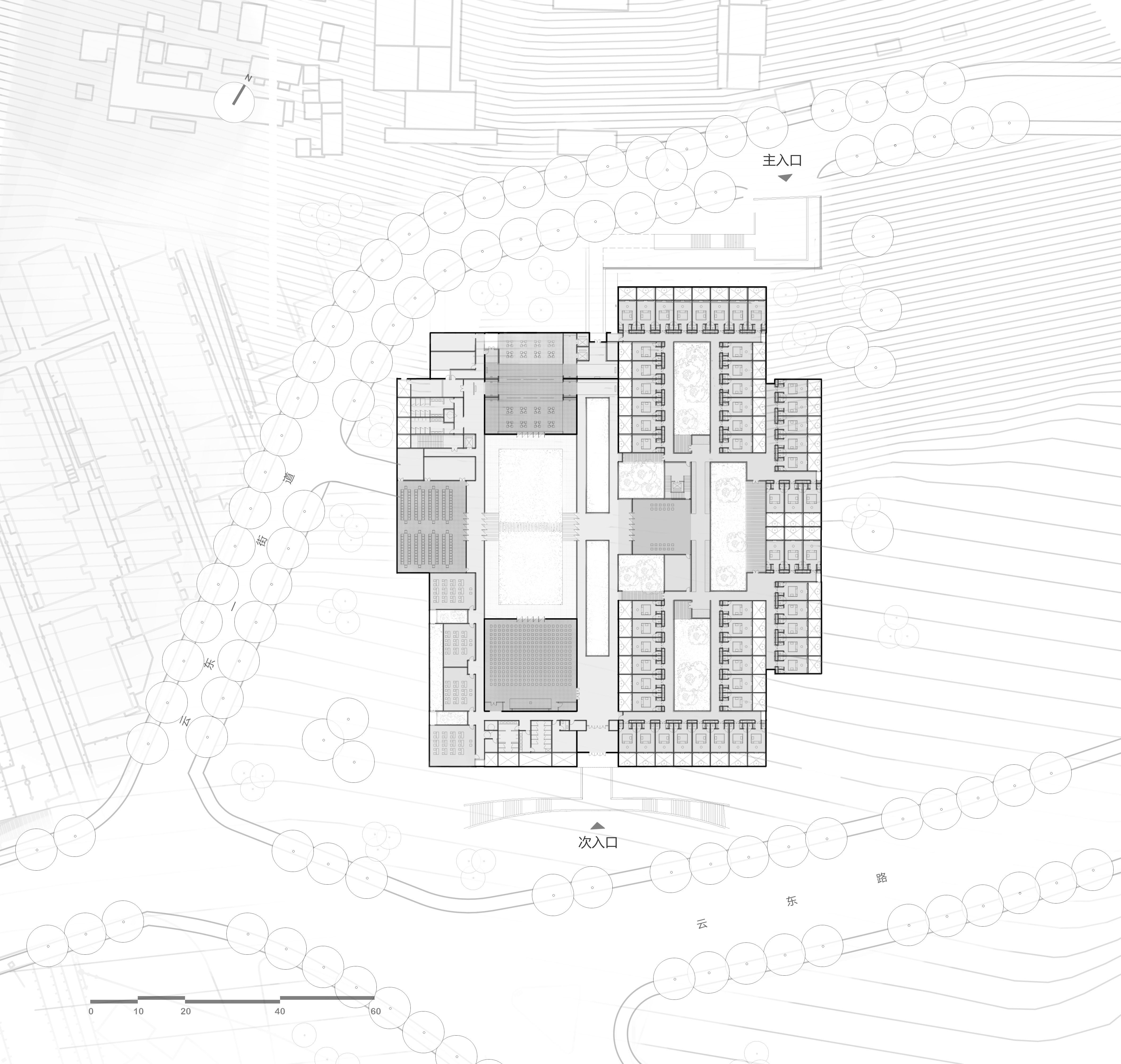
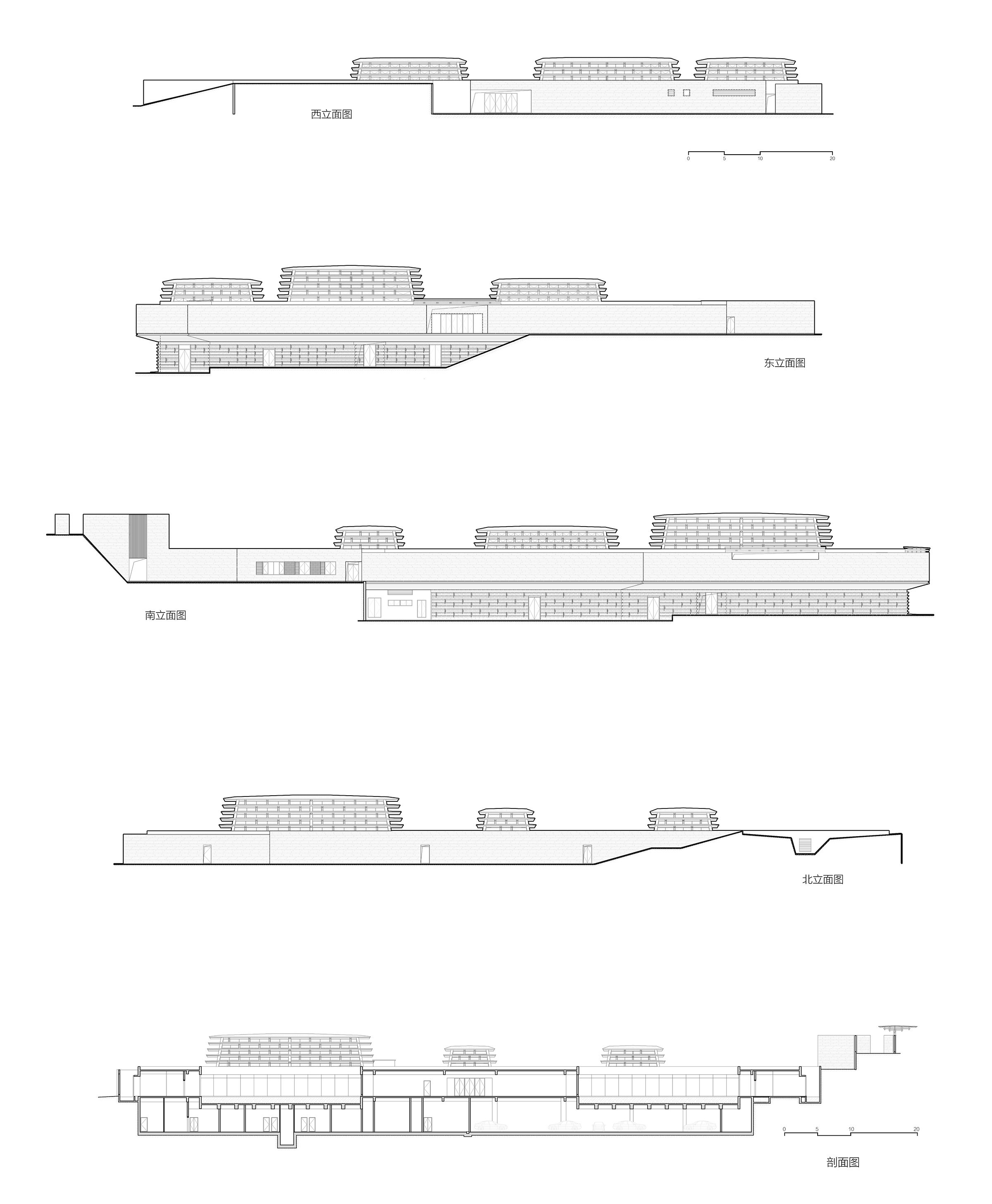
完整项目信息
项目名称:云龙山禅修酒店
项目地点:江苏徐州
详细地址:徐州云东路泰山路交叉口云东文化街区
项目类型:酒店
设计时间:2019年
建成时间:2022年
项目规模:6000平方米
设计单位:gad杰地设计
项目总监:张微
项目主创:张微、唐凤起
完整团队成员
建筑:唐凤起、姜正杰、徐杰、柳源、刘仕龙、陈阳阳、倪泽慧、初建州、时吉涛
结构:刘成欣
给排水:秦睿
暖通:张小峰
电气:穆卫浩
其他参与者
室内设计:ZSD卓时设计
景观设计:上海槿色园林景观设计事务所(有限合伙)
业主:徐州市新盛投资控股集团有限公司
摄影:雷坛坛Jonathan Leijonhufvud
结构手法:框架结构
建筑材料:幻彩蓝麻、胶合木
版权声明:本文由gad杰地设计授权发布。欢迎转发,禁止以有方编辑版本转载。
投稿邮箱:media@archiposition.com
上一篇:竞赛二等奖方案 | 深圳金融文化中心:都市公共性的集合 / 陈东华建筑事务所+华南理工大学建筑设计研究院
下一篇:黑夜独白 | 当一个城市不动声色